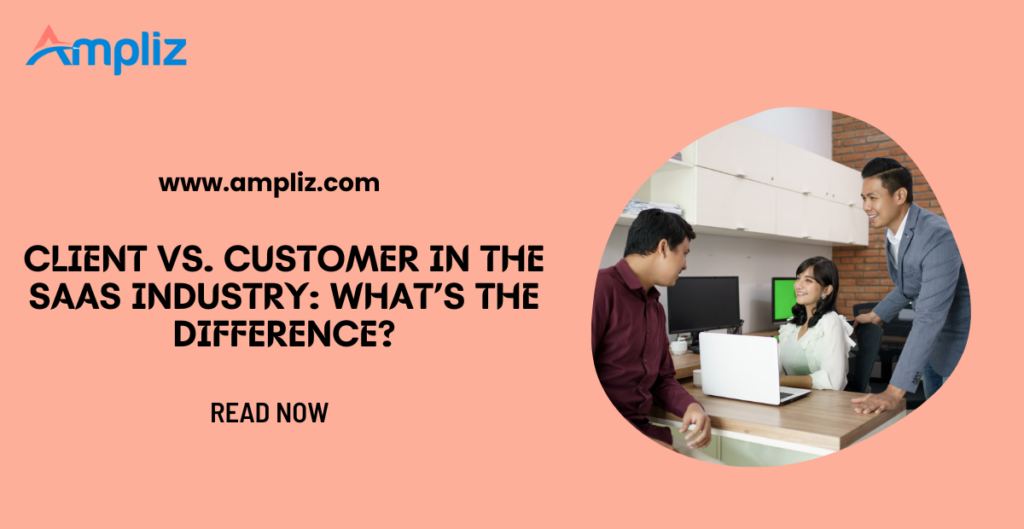In the B2B SaaS industry, distinguishing between clients and customers is crucial to understanding how software providers can effectively cater to both.
Here’s the deal…
Unless your product is only suitable for enterprises, striking a balance between serving clients and customers is a strategic move that can yield significant advantages for your SaaS business.
By learning how to effectively guide both clients and customers throughout the product lifecycle, you can nurture them to conversion and also build lasting relationships.
So, client vs customer…
Let’s take a closer look at the similarities and differences between the two.
We’ll also briefly chat about the role of customer success in the SaaS industry and answer some frequently asked questions about clients and customers.
If you’re a customer success manager, on the customer support team, or in the sales department at a SaaS company, this article is for you!
What is a customer in SaaS?
Customers in the B2B SaaS industry are people who work at organizations that use software as end-users, benefiting from its user-friendly features. For instance, you might refer to someone who’s signed up for a monthly subscription to a free-forever or a basic plan as a customer.
Sales and customer success teams help customers by answering everyday questions, hosting basic product demos, or providing billing support. They might also offer trials or discounts to higher-level plans to encourage customers to develop longer relationships with your business. A customer success manager, on the other hand, focuses on understanding the broader goals and challenges of customers, ensuring they are fully onboarded, and guiding them through strategies that drive long-term success.
TL;DR: If someone signs up for a basic-level plan, you might refer to them as a customer.
What is a client in SaaS?
Clients in the B2B SaaS industry are people who work for or lead organizations that use software for high-level operations. For instance, you might refer to someone who’s signed up for an annual subscription to a premium or enterprise-level plan as a client.
Experienced sales reps use sales enablement strategies, such as hosting custom product demos, offering personalized onboarding, and quoting tailored pricing to nudge B2B client leads to conversion.
After onboarding, reps continue offering plenty of “hand-holding” opportunities to encourage ongoing client success and a positive experience. For instance, some SaaS companies offer clients a dedicated team or rep plus a client portal for ultra-tailored support.
TL;DR: If someone signs up for a high-level plan, you might refer to them as clients.
Similarities between client and customer
While clients and customers have many differences, they still share some similarities.
For instance, both clients and customers desire:
- An effortless customer experience
- Helpful advice and resources
- Kindness and professionalism
- To be cared for
- Exceptional customer service
- Solutions that solve their pain points
- Low-friction interactions during every stage in the buyer’s journey
By rolling out the red carpet for both user types, no matter where they are in the funnel, you can encourage longer, more meaningful relationships and lower customer churn rates. This can also help motivate customers and clients to refer more people to your business.
Client vs. customer SaaS: Key differences between client and customer
A customer is anyone who purchases a product or service.
In the SaaS world, a potential customer might be an individual who buys a subscription to a software plan for personal use or a small team purchasing a tool to streamline their tasks.
Customers are primarily focused on the transactional nature of the purchase. In other words, they’re interested in the immediate value they get from what they buy.
On the other hand, a client usually refers to a business or entity that engages in a longer-term relationship with the provider. This often involves customized solutions, ongoing support, and a deeper level of commitment from both sides.
Clients look beyond immediate value. They’re more interested in how a solution can evolve and adapt to their specific needs over time.
However, if there’s one solution that’s blurred the lines between clients and customers, it’s AI business tools. With the integration of artificial intelligence in SaaS offerings, clients and customers can experience more personalized, efficient, and predictive solutions.
For instance, a customer with a basic plan might use an AI-driven tool to automate mundane tasks, while an enterprise client might leverage the same tool for data analytics and strategic insights. This intersection means SaaS providers need to be even more attentive to the evolving needs and expectations of their user base.
A prime example of a SaaS company successfully serving clients and customers is TSplus, renowned as one of the premier TeamViewer alternatives. With over 500,000 companies (including industry giants like Oracle, Huawei, and Siemens) trusting TSplus as their client-focused remote support solution, the company’s robust capabilities cater to the intricate demands of enterprise clients.
Simultaneously, TSplus boasts a massive user base, numbering in the hundreds of thousands across the globe, demonstrating its capacity to provide an accessible and user-friendly experience to customers, too.
What sets TSplus apart is its seamless synergy between serving both user types.
For clients, TSplus offers comprehensive remote support features with advanced security and scalability, aligning with the needs of large enterprises.
On the flip side, it provides customers with an intuitive and hassle-free remote access experience, ensuring end-users can harness its capabilities effortlessly.
This dual approach not only widens its market reach…
It also promotes product innovation as feedback from diverse user profiles helps the company refine its offerings.
Wrap up
Unless your business solely targets enterprises, knowing the differences between customers and clients is pivotal to supporting them throughout the product lifecycle.
Remember, a customer is typically around for the short term. They might come and go as they please and may only be interested in lower-level subscription plans or free trials.
A client, on the other hand, partners with you for long-term support. They depend on your higher-level products and support team to guide them toward business success.
Frequently asked questions about client vs. customer SaaS
Before we let you go, here are some answers to some of the top FAQs about clients and customers in the SaaS space.
Why do people say client instead of customer?
People refer to individuals as clients instead of customers when developing an ongoing relationship with them.
For instance, if someone signs up for your productivity app’s free plan with no intention of using it long-term, they’re likely a customer. But if someone invests in a custom or advanced plan and needs ongoing support from your sales team, they’re likely a client.
What is the legal definition of client vs customer?
According to Dictionary.com, a client is a regular customer, while a customer is a person who purchases goods or services from another.
In other words, clients are typically loyal buyers, while customers may come and go.
What is the definition of a client?
A client is a loyal customer who often needs ongoing support from a dedicated sales rep, service professional, or client success team.
What should I call my customers?
What you should call your customers depends on your relationship with them.
For instance, if individuals have signed up for lower-level plans, free-forever subscriptions, or free trials, you might refer to them as “customers” until they upgrade.
If people are interested in custom ongoing support and higher-level plans, consider calling them “clients” unless they downgrade.
Is it ok to say no to a client?
Of course, it’s okay to say no to a client! If the client’s request is something your business can’t accommodate, drawing a healthy boundary is essential.
The key is to remain solution-focused.
In other words, instead of answering them with a blatant “no,” try focusing on what you can offer them in place of their request.
For instance:
“Our customer service department can’t offer 24/7 hands-on support at this time, but we’re happy to link you up with Sarah and Devin, our Enterprise Plan support specialists. Devin can assist you between 9am and 3pm Monday through Thursday. Sarah can help you between 2pm and 8pm Tuesday through Saturday. We also have Meredith and Tom, who fill in for both specialists during their usual schedules in case they’re out of the office.”




